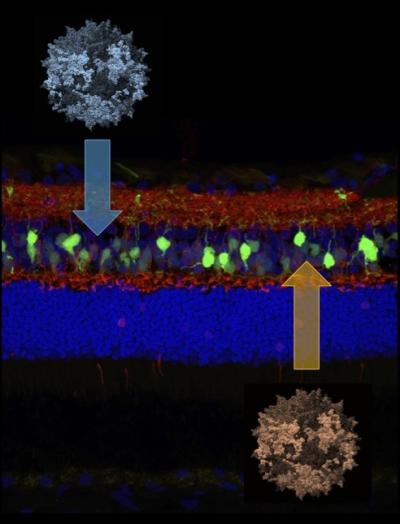University of Pennsylvania researchers have developed a gene therapy that restores dim-light vision in dogs with a congenital form of night blindness, offering hope for treating a similar condition in people.

UPenn researchers used gene therapy to specifically target ON bipolar cells in the middle layer of the retina. (Image: Courtesy of Keiko Miyadera)
People with congenital stationary night blindness (CSNB) are unable to distinguish objects in dim-light conditions. This impairment presents challenges, especially where artificial lighting is unavailable or when driving at night.
In 2015, the researchers, from Penn’s School of Veterinary Medicine, learned that dogs could develop a form of inherited night blindness with strong similarities to the condition in people. In 2019, the team identified the gene responsible.
Today, in the journal Proceedings of the National Academy of Sciences, they’ve reported a major advance: a gene therapy that returns night vision to dogs born with CSNB. The success of this approach, which targets a group of cells deep in the retina called ON bipolar cells, charts a significant step toward a goal of developing a treatment for both dogs and people with this condition, as well as other vision problems that involve ON bipolar cell function.